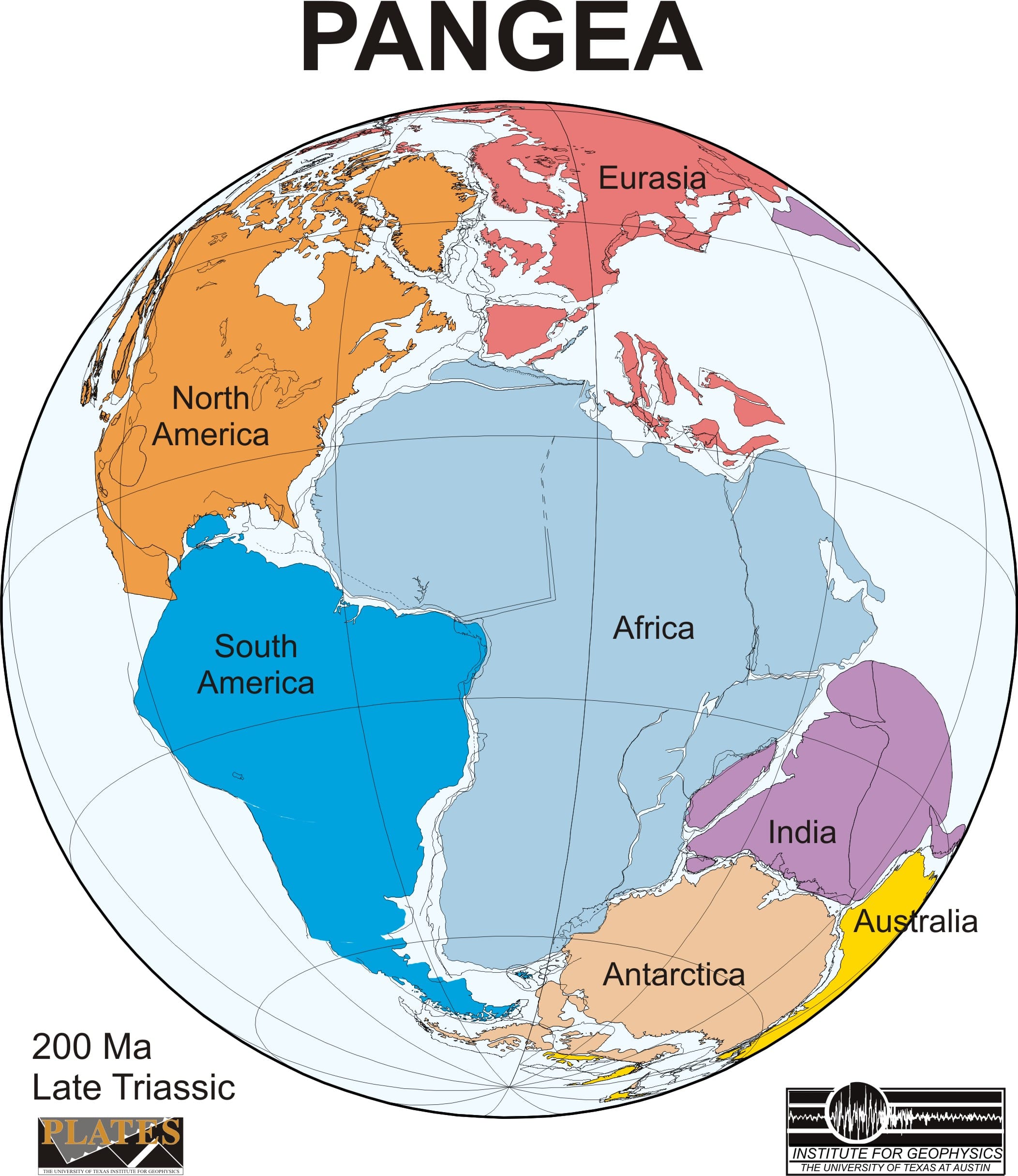A Colossal Past
Imagine Earth 300 million years ago. A single supercontinent, Pangaea, dominates the globe, and at its heart lies a colossal mountain range—the Central Pangean Mountains. Likely rivaling even the Himalayas, these peaks played a pivotal role in shaping the planet’s ancient climate and life. Let’s journey back in time to explore these lost giants, from their dramatic formation to their eventual fragmentation and lingering impact on the continents we know today. For a glimpse into another fascinating historical figure, check out Annia Aurelia Galeria Lucilla.
Birth of a Mountain Range
The Central Pangean Mountains were born from a titanic continental collision between Euramerica and northern Gondwana. During the Carboniferous period, these landmasses converged, triggering the Variscan and Alleghanian orogenies—mountain-building events of immense scale. This collision crumpled the Earth’s crust, thrusting rock layers upward to form the towering peaks of the Central Pangean range.
Rise and Fall of Giants
Reaching their zenith in the early Permian, these mountains probably stood as formidable barriers, influencing global wind patterns and creating dramatic rain shadows. Evidence suggests they may have even supported glaciers despite their equatorial location, a fascinating climatic puzzle for scientists. However, even the mightiest mountains succumb to the forces of nature. Erosion, the relentless sculptor of landscapes, immediately began to wear down the peaks. By the late Permian, they may have already lost half their height, a foreshadowing of their eventual fate.
A Climatic Crossroads
The Central Pangean Mountains were more than just a dramatic backdrop; they significantly impacted Pangaea’s climate. Their presence probably disrupted air currents, creating monsoon-like weather patterns and influencing the distribution of rainfall. These conditions fostered the growth of enormous swamp forests, which, over time, transformed into the rich coal deposits we still use today.
Fragments of a Lost World
Though the Central Pangean Mountains as a single range are long gone, their eroded roots persist across continents. The Appalachian Mountains in eastern North America, the Scottish Highlands, and possibly the Anti-Atlas Mountains in Morocco are thought to be remnants of this once colossal chain. These seemingly disparate ranges share a common ancestry, a testament to the powerful forces that have reshaped our planet. If you’re fascinated by nature’s grandeur, you might also enjoy the Avenue of the Baobabs Madagascar, a testament to the enduring power of the natural world.
A Legacy in Stone
Though vanished, the Central Pangean Mountains’ influence echoes through time. They shaped ancient climates, contributed to the formation of crucial coal deposits, and left a lasting imprint on the continents we inhabit. Their story reminds us that even Earth’s most imposing features are transient, subject to the relentless forces of geological change. Ongoing research continues to unravel the mysteries of these lost giants, offering further insights into their impact on our planet.
Where are the Central Pangean Mountains Now?
The Central Pangean Mountains, once a continuous range, now exist as fragmented remnants scattered across the globe due to continental drift. These fragments, found in the Appalachians, Scottish Highlands, and possibly the Anti-Atlas Mountains of Morocco, offer clues to the mountains’ colossal past.
Scattered Remnants
- Appalachian Mountains (North America): These weathered peaks offer a glimpse into Pangaea’s past.
- Scottish Highlands (Europe): The rugged terrain of the Highlands bears witness to the ancient grandeur.
- Anti-Atlas Mountains (Morocco): The origin of these North African peaks is debated; some suggest a connection to the Central Pangean Mountains, while others propose a separate formation.
Shaping Climate and Continents
The Central Pangean Mountains profoundly influenced Pangaea’s climate, likely creating rain shadows and fostering lush, swampy environments that eventually became coal deposits. Their existence also sheds light on the forces that drive the formation and breakup of supercontinents, highlighting the dynamism of Earth’s surface over geological timescales.
What Happened to the Central Pangean Mountains?
The story of the Central Pangean Mountains is one of formation, dominance, and eventual fragmentation. Born from the collision of Euramerica and Gondwana during the Carboniferous, these mountains likely rivaled the Himalayas in scale.
A Timeline of Change
- Carboniferous (340 million years ago): The mountains begin to form.
- Early Permian (295 million years ago): The mountains reach their peak height.
- Late Permian (250 million years ago): Erosion significantly reduces the mountains’ height.
- Early Jurassic (200 million years ago): Pangaea begins to break apart, fragmenting the mountain range.
Erosion and Continental Drift
Erosion played a crucial role in wearing down the mountains over millions of years. Then, as Pangaea rifted apart, the Central Pangean Mountains were fragmented and dispersed across the newly forming continents.
Where are the Appalachian Mountains in the UK?
The Appalachian Mountains are not located in the UK. They are in eastern North America. The Scottish Highlands, however, share a geological connection with the Appalachians. Both originated from the Central Pangean Mountains during Pangaea’s existence.
A Shared Ancestry
When Pangaea began to break apart during the Jurassic period, the Central Pangean Mountains were fragmented. The section on the North American landmass became the Appalachians, while the portion on the European landmass contributed to the Scottish Highlands.
Geological Echoes
Though separated by the Atlantic Ocean, the Appalachians and Scottish Highlands share geological similarities, including similar rock types and ages, offering compelling evidence of their shared origin in the long-lost Central Pangean Mountains.
- Georgia Platform: A Southern Strategy, 1850s - March 31, 2025
- How many weeks is 40 days: Quick Conversion Guide for Accurate Results - March 31, 2025
- How many feet is 300 meters? 984 Feet: Understand Length Conversions Easily - March 31, 2025
















